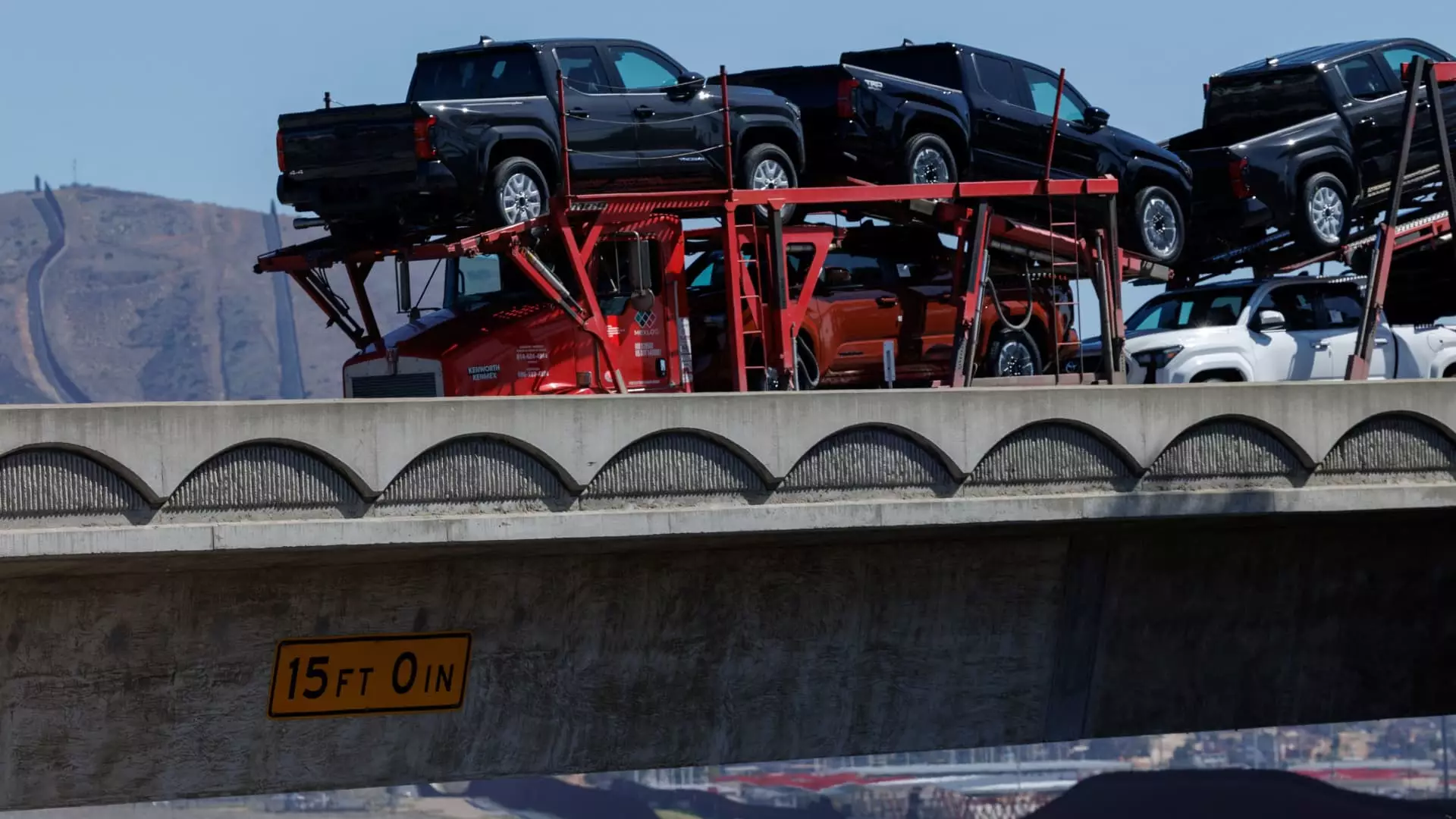The recent announcement by President Trump regarding a staggering 25% tariff on imported vehicles and automotive parts has sent shockwaves throughout the industry. This move, which is set to come into effect on April 3 for cars and May 3 for parts, not only poses a direct threat to the job market but also raises serious concerns about the ripple effects it will have on consumers and the economy at large. As automotive stocks tumble in the aftermath—General Motors saw a decline of over 7%—the broader implications of these tariffs beg scrutiny, especially considering how intertwined the manufacturing processes are across North America.
This punitive measure seems to stray from the ideal of protecting American jobs and innovation and veers into the realm of protectionism that could ultimately hinder growth rather than bolster it. Economic forecasts suggest that the tariffs could inflate the price of imported vehicles by anywhere from $5,000 to $15,000. Such steep hikes will directly impact consumers, particularly middle-class families who are already grappling with inflated costs in other sectors. The question arises: is this tariff truly a strategy for revitalizing American manufacturing, or simply a short-sighted ploy that jeopardizes the competitive edge of U.S. automotive brands?
Domestic Production: An Overstatement of Capacity
One of the more contentious points made by Trump’s administration involves the insistence that cars manufactured in the U.S. would not be subject to these tariffs. However, this perspective overlooks the complex supply chain that underpins the auto industry. Vehicles today are made up of thousands of interdependent parts sourced from around the globe, complicating the notion that a simple “Made in America” label equates to complete domestic production.
According to S&P Global Mobility, a vehicle can consist of approximately 20,000 parts, with many crossing the U.S. border multiple times before reaching their final assembly. A significant proportion of these parts are sourced internationally—between 50 and 120 countries, to be precise. Relying on this simplistic portrayal of American production undermines the actual challenges automakers face.
Interestingly, while major stakeholders from the United Auto Workers union and the American Automotive Policy Council have expressed tentative support for the tariffs, there exists a palpable tension regarding the ultimate ramifications. Key voices within the industry, including former Missouri Governor Matt Blunt, emphasize the need for worrying about consumer prices, a message that rings hollow against the backdrop of soaring living costs.
The Dilemma of Balancing Protectionism and Free Markets
It is essential to strike a balance between protecting American labor and preserving the principles of free markets, which have historically driven innovation and economic growth. The very essence of a global market is the ability to trade without planetary walls constraining movement. If American automakers are counseled to shift component sourcing solely to domestic manufacturers in response to these tariffs, the immediate result could be a significant loss of not only variety but quality. The innovation that thrives in a competitive marketplace could be stifled as companies scramble to adjust their supply chains to align with unattainable tariff mandates.
The historical data points, particularly in the automotive industry, show that tariffs are often a double-edged sword. They aim to shield domestic jobs but can inadvertently lower the competitiveness of American manufacturers on the global stage. Tariffs drive prices up, and as economists have noted, there’s often a direct correlation between elevated vehicle prices and reduced affordability for American consumers.
Will “America First” Become “America Alone”?
Amid fervent assertions of putting “America First,” this cavalier approach to trade policy may harbor unintended consequences. Instead of fostering a robust domestic car manufacturing sector, the tariffs could lead to sustained increases in car prices and reduced model availability. The largest automakers—Ford, GM, and Stellantis—may find themselves squeezed between protecting their bottom line and potential backlash from consumers who suddenly find their dream car out of financial reach.
As tariffs accumulate and production becomes more insular, America risks slipping into a state of economic isolation, hindered by self-imposed barriers. Industries thrive on collaboration, innovation, and competition. We must question if the shield of protectionism might one day feel more like a chain, shackling American consumers to reduced choices and ballooning prices for necessities. In an age where globalization offers opportunities that were previously unimaginable, one must ponder: Is our drive for protection making us as a nation suffocate on our own ambitions?

